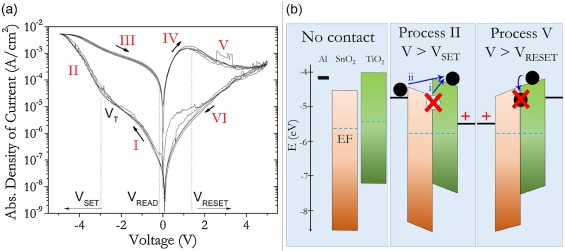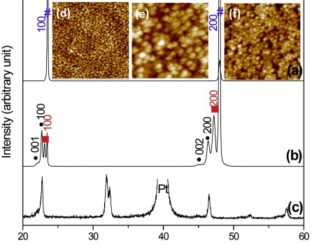
Memristive behavior of the SnO2/TiO2 interface deposited by sol-gel
Abstract: A novel and cheap Resistive Random Access Memory (RRAM) device is proposed within this work, based on the interface between antimony doped Tin Oxide (4%at Sb:SnO2) and Titanium Oxide (TiO2) thin films, entirely prepared through a low-temperature sol–gel process. The device was fabricated on glass slides using evaporated aluminum electrodes. Typical bipolar memristive behavior under cyclic voltage sweeping and square wave voltages, with well-defined high and low resistance states (HRS and LRS), and set and reset voltages are shown in our samples. The switching mechanism, explained by charges trapping/de-trapping by defects in the SnO2/TiO2 interface, is mainly driven by the external electric field. The calculated on/off ratio was about 8 × 102 in best conditions with good reproducibility over repeated measurement cycles under cyclic voltammetry and about 102 under applied square wave voltage.
Author(s): Boratto, Miguel H.; Ramos, Roberto A., Jr.; Congiu, Mirko; et al.
Applied Surface Science
Volume: 410 Pages: 278-281 Published: 2017
DOI: https://doi.org/10.1016/j.apsusc.2017.03.132
PDF: Memristive behavior of the SnO2TiO2 interface deposited by sol-gel




